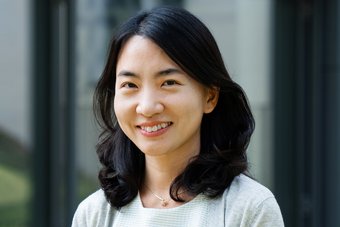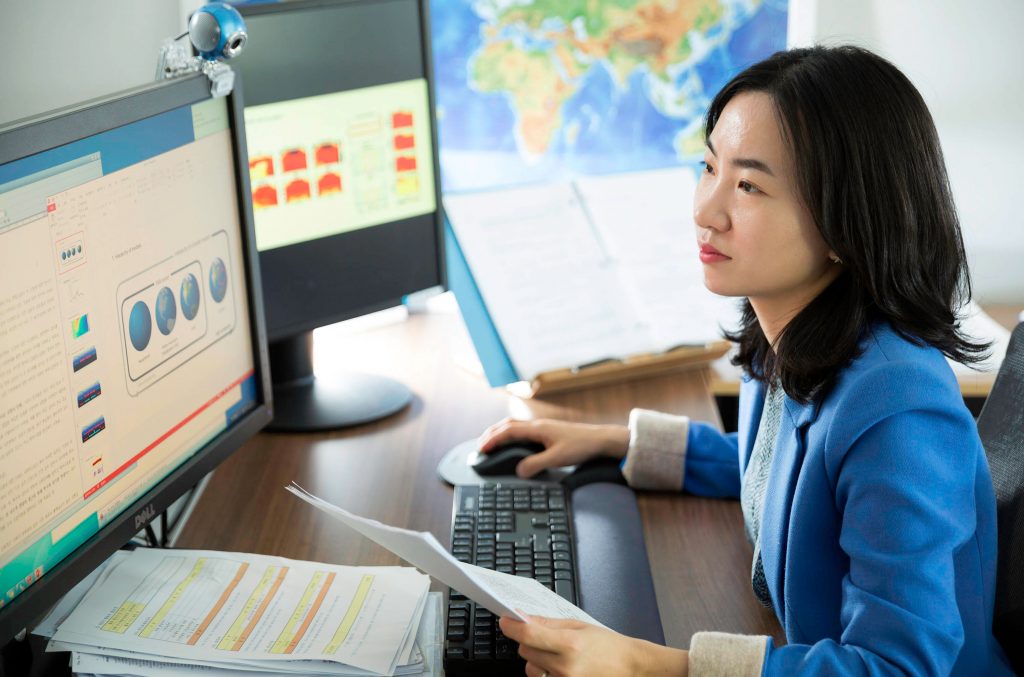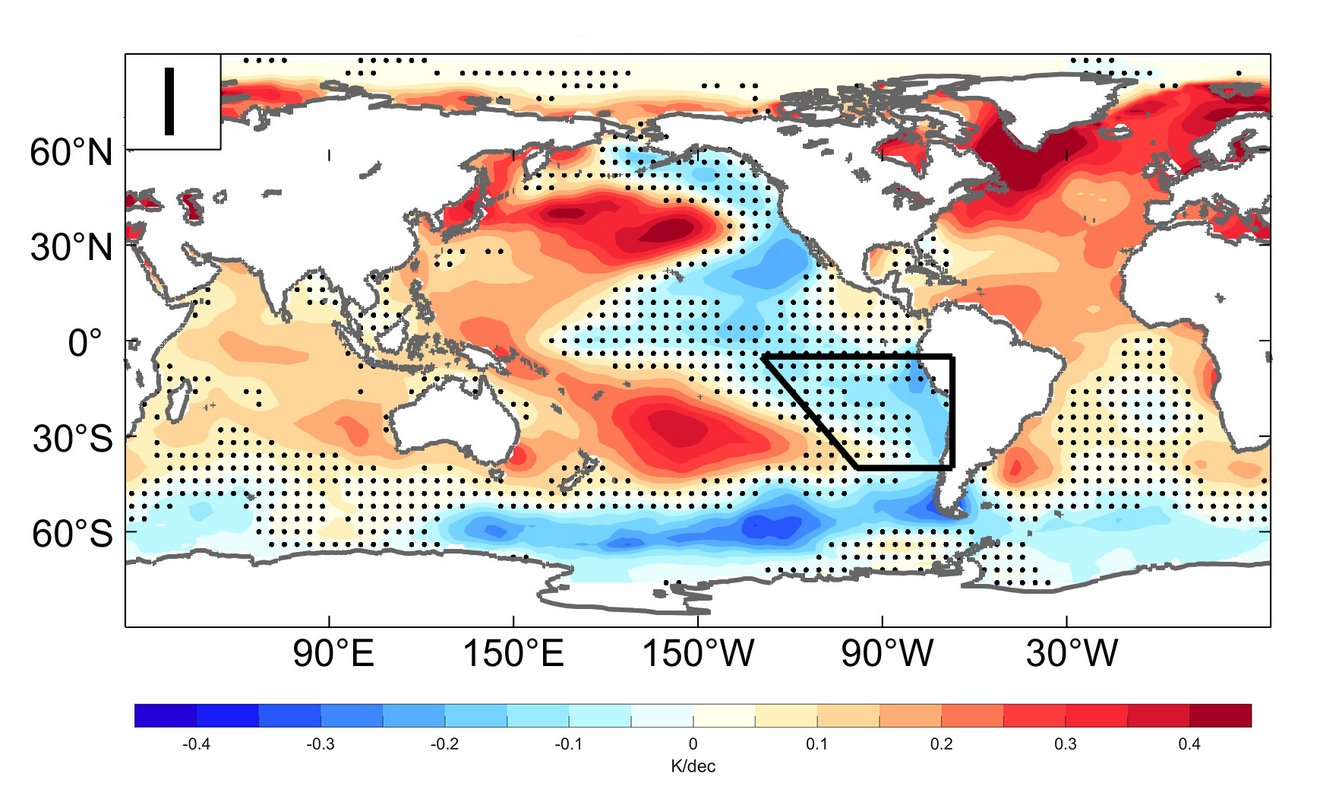Climate Dynamics research field — a portrait of new director Sarah Kang

How would you describe your field of research in a few sentences?
I hope to understand why the climate is changing and what it will look like in the future. To find out, experts are developing climate models that give us answers to these questions. For these models to be meaningful, one needs a certain understanding of the mechanisms behind climate change. It is these mechanisms I am trying to understand in as much detail as possible.
How did you come to become a climate researcher in the first place?
Quite early, even as a young student. My father was a professor of meteorology in Korea and took us to NASA in Maryland in the USA every year. He had colleagues there with whom we were good friends. We also visited his colleagues in Italy and Hawaii — and they all seemed to really enjoy what they were doing. That fascinated me: I liked the way they worked and how they enjoyed science. That's why I started studying atmospheric science after school.
Did you regularly discuss climate research over dinner at home?
No, even though I attended lectures by my father. I didn't really have a problem with that. But I thought: to get an A, I really have to be the best — otherwise the other students might have suspected that the grading might not be entirely fair. That's why I worked really hard to get everyone to accept that I really deserved the A.
You then moved to the USA, to Princeton, for a doctorate. How did that come about?
In Korea, the focus of research at the time was on investigating the regional, East Asian climate. However, I was more interested in the large-scale, global climate. My supervisor at Princeton was an expert in this field, so it was a good fit. Interestingly, he had also supervised my father many years earlier, during his postdoctoral period in the USA. I still have a photo of us visiting my future doctoral supervisor's house — I was five years old at the time!

After your doctorate and a postdoctoral position at Columbia University in New York, you returned to Korea...
... because my husband lived there, quite simply. It's actually difficult for young people in Korea to get a position as a lecturer at a university. But I was lucky, I was able to get a position as an assistant professor at the Ulsan National Institute of Science and Technology, UNIST for short. It was a very young university at the time, and unlike most other East Asian universities, UNIST didn't have a pronounced hierarchy. It was a lot of fun working there.
Yet here you are, twelve years later, sitting in your new office in Hamburg...
I actually never thought about living in Europe. I knew the USA, but I thought Europe was a different world. In Korea, we imagine that Europeans are romantic and relaxed and enjoy life. But when this opportunity came up here, I just couldn't pass it up. Because the conditions here are outstanding: as Director, I enjoy enormous research freedom and have the full support of the Max Planck Society, both in terms of staff and computer resources.
How exactly did the selection process go?
The institute had invited me to give a talk. I had no idea that they had me in mind as a candidate for a position as director; I thought it was a normal seminar. Then the Managing Director, Bjorn Stevens, invited me for a coffee and asked if I would like to come to Hamburg. At first I thought it was for a group leader position in his department: that alone would have been an honor for me. But then he said that they were looking for a new director and I was truly excited; I could never have imagined that. To get the job, however, I still had to write a research proposal and convince an appointment committee of my ideas.
What are your plans and where do you want to focus your research?
The question that I think about most is the warming pattern in the tropical Pacific. It is true that the Earth's climate has warmed globally over the last 30 years. However, contrary to the predictions of climate models, the tropical Pacific has cooled at times during this period and I want to understand why. Over roughly the same period, the Southern Ocean, which surrounds the entire Antarctic, has also cooled. Many experts are of the opinion that this was caused by the cooling of the tropical Pacific. In contrast, I think it is more likely that it is the other way around and that the Southern Ocean has contributed to the cooling of the tropical Pacific.
What kind of mechanisms play a role in this?
There are several mechanisms that play into this. For example, the conditions of the northern tropical Atlantic or the Indian Ocean could have led to cooling. Aerosols in the atmosphere could also have contributed to the cooling. A kind of thermostat mechanism is also important: in the eastern tropical Pacific, large quantities of water rise from the depths to the surface. This deep water has not yet been subjected to the effects of global warming. It is therefore cold and has a cooling effect. However, over time, this water will also warm up, which should weaken the thermostat effect. The question is: when will this happen?

What is the situation at the moment; in which direction is the trend pointing?
The tropical Pacific is indeed very warm. However, we don't yet know whether this is mainly due to the strong El Niño event, i.e. a natural temperature fluctuation in the eastern Pacific, or whether it is mainly caused by global warming. I think it's a mixture of both. What seems clear is that the tropical Pacific is a key factor in the extent of global warming. If it is warmer there than in the other regions, global warming will be greater. If it warms less, global warming will be less. We therefore need to understand how much the tropical Pacific is warming in relation to other parts of the world. The more accurate the picture we have of all these mechanisms, the better we can assess how these mechanisms will change in the future.
What tools are you using to get to the bottom of these questions?

I mainly work with climate models that run on powerful computers. Here at the Max Planck Institute, we have one of the world's leading climate models with a global resolution of one kilometer. To run climate simulations with it, I can use Levante, the new high-performance computer of the German Climate Computing Center. For example, I can enter how the CO2 content of the atmosphere is increasing and then see how this affects the development of the climate. In Korea, I had only very limited computer resources. Here I will be able to carry out far more computer experiments, which is really fascinating. I also believe that there will be fruitful collaboration with the other departments at the institute. Jochem Marotzke and his team have enormous expertise in the ocean, and Bjorn Stevens' working group specializes in clouds and the atmosphere. I can use all of this expertise to get as complete a picture as possible of climate dynamic processes.
Even if your office is not yet fully furnished, how do you like it after two months in Hamburg?
I really like it here. What I like best is that I can get almost everywhere by bicycle: the size of the city is really ideal for this. My son has quickly settled in here, as has my eight-year-old daughter, even if she was very homesick for Korea at first. My husband will also be coming to Germany in December to take parental leave for three years.
The most important question at the end: Which is the best Korean restaurant in Hamburg?
(laughing) I can't say yet — I've only had one Korean meal here so far. That was okay, but not the be-all and end-all.
The interview was conducted by Frank Grotelüschen.
Website of the Department Climate Dynamics
Personal Website of Sarah Kang

